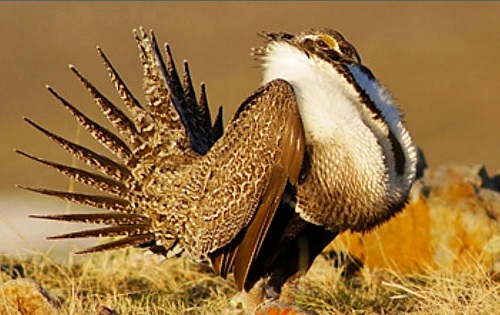 New federal management plans for habitat relied upon by the greater sage grouse in 11 Western states ease restrictions on potentially harmful industrial development and undo collaborative efforts that were years in the making, Backcountry Hunters & Anglers announced today.
New federal management plans for habitat relied upon by the greater sage grouse in 11 Western states ease restrictions on potentially harmful industrial development and undo collaborative efforts that were years in the making, Backcountry Hunters & Anglers announced today.
The Bureau of Land Management unveiled this morning the final records of decision, or RODs, for amendments that weaken sage grouse conservation plans set in 2015. A product of a decade-plus investment by innumerable stakeholders – including ranchers, farmers, state and federal officials and conservationists, as well as sportsmen and women – these plans represent one of the most successful landscape-level conservation collaborations in history. Critically, they also have been foundational to the U.S. Fish and Wildlife Service’s decision to not list the greater sage grouse under the Endangered Species Act.
In addition to unraveling years of productive partnerships, the administration RODs will fundamentally alter habitat protections for sagebrush country all across the West. The revised plans ease no-surface occupancy protections for development in some of the most valuable sage steppe habitat by allowing new exemptions or waivers. Additionally, sagebrush focal areas – habitat identified in the 2015 plans as critical to sage grouse survival – across designated priority habitat have been entirely eliminated, allowing mineral development that was previously prohibited.
BHA Conservation Director John Gale expressed concerns with the administration’s approach.
“The administration had a tremendous opportunity to build on the strength of the 2015 plans while resolving some imperfections that would have improved consistency and partnership with states,” said Gale. “Instead, they chose to eliminate protections for sagebrush country. This decision not only threatens the health of the greater sage grouse; it also negatively impacts more than 350 other species that rely on the sage steppe, including mule deer, elk and pronghorn.
“Sportsmen and women came together with other conservationists, ranchers, farmers, and federal and state governments to develop plans that were tailored to local needs,” Gale continued. “By eroding those plans mid-implementation, the administration has made it incredibly difficult to create a more resilient public lands management model – one that not only can balance the pressures of development and recreational uses but also anticipates and addresses cumulative impacts like drought, wildfire and invasive species that are less difficult to predict and withstand.”
Related articles:
Habitat Must Remain the Focus of Sage Grouse Conservation Efforts
